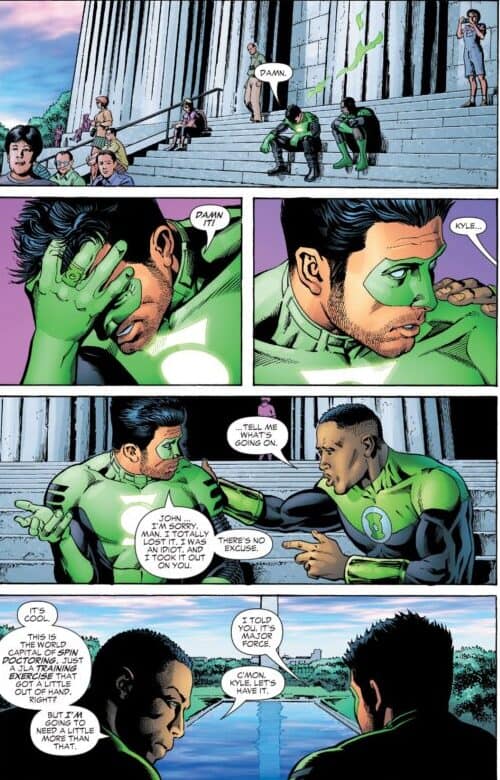***Contains Spoilers***
The conclusion of Green Lantern Vol. 3, spanning issues #165-181, serves as the final chapter for Kyle Rayner’s solo adventures before Geoff Johns’ era begins. Primarily split between Ben Raab and Ron Marz, these issues deliver a mix of earthbound drama, cosmic spectacle, and legacy-building. The series closes with a six-issue storyline that gives Kyle a fitting, if slightly underwhelming, send-off. While it’s a step up from some 1980s Green Lantern stories, it still struggles with character chemistry and coherence.
The strongest part of this run is its grounding in Kyle’s humanity, particularly when he’s interacting with his life on Earth. For a character often defined by cosmic escapades, it was refreshing to see his relationships and personal struggles take center stage. This focus allows for some emotional depth, especially as Kyle grapples with his legacy as the sole Green Lantern and his place in the larger DC Universe.
Ron Marz’s six-issue conclusion stands out as the highlight. Marz, who introduced Kyle back in Green Lantern #48, does a solid job bringing the story full circle. While not groundbreaking, it’s a cohesive narrative that allows Kyle to reflect on his journey while also setting the stage for the series’ eventual handoff to Geoff Johns and the return of Hal Jordan. You can feel the effort to give Kyle closure, which feels both earned and sincere.
Unfortunately, this portion of the series lacks the spark that could have made it memorable. For one, the chemistry between the characters is lacking. Kyle’s interactions—whether with other Lanterns, his Earthbound allies, or even his cosmic foes—don’t carry the emotional weight they should. While better than the stilted dialogue of the 1980s era, there’s still a lack of depth in how the relationships are portrayed. Supporting characters, in particular, feel underdeveloped, leaving the story feeling hollow at times.
The cosmic side of the series also underdelivers. While visually interesting, Kyle’s adventures in space never reach the epic heights one might expect from a Green Lantern book. These sequences often feel like filler compared to the more grounded, Earth-based moments, and they fail to capitalize on the unique opportunities of the Green Lantern mythos.

Finally, while the series does a decent job wrapping up Kyle’s story, it’s hard to ignore that it’s ultimately overshadowed by what comes next. Knowing that Geoff Johns’ era, with its dynamic storytelling and revitalization of the Green Lantern Corps, is just around the corner makes this conclusion feel like a placeholder.
Green Lantern Vol. 3 concludes on a competent but unremarkable note. While I appreciated the focus on Kyle’s humanity and Marz’s efforts to tie things up, the series never fully capitalized on its potential. It’s a fine read for Kyle Rayner fans, but there’s little here that demands a revisit. I’d rate it 2 stars—I liked it well enough, but I wouldn’t read it again.
Feature Image Green Lantern #177 cover art by Todd Klein and Brandon Peterson
Keep NewToComics.com running with a donation or shopping with through our affiliates—your support helps maintain the site and continue guiding new readers into the world of comics!


